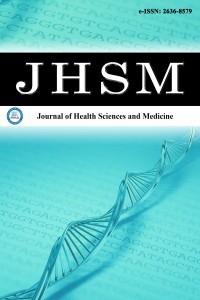
Journal of Health Sciences and Medicine
Yazarlar: ["Ahmet KELEŞ", "Ahmet KARAKECİ", "Tunç OZAN", "Ercan YUVANÇ"]
Konular:-
DOI:10.32322/jhsm.1212923
Anahtar Kelimeler:Resistive index,Stone,Kidney
Özet: Aim: The doppler-based renal resistive index is a recently proposed technique for measuring changes in renal perfusion and predicting acute kidney damage. The purpose of this study was to look at the influence of stone density on the renal resistive index (RI) after extracorporeal shock wave lithotripsy (ESWL) in patients with non-obstructed kidney stones. Material and Method: Between May 2020 and July 2021, 48 consecutive patients with unilateral renal calculi of ≤ 20 mm were treated with ESWL monotherapy. The patients' non-contrast computed tomography (NCCT) images were processed and grouped into two groups using Hounsfield units (HU) (Group 1, n=27, ≤ 1000 HU; Group 2, n=21, > 1000 HU). The same radiologist performed Doppler ultrasonography on all cases before, one hour, and one week following ESWL. Measurement of the RI taken in the remote region (at least 20 mm from the stones). Patient age, gender, BMI, stone laterality, stone size, and stone position were investigated as potential predictors. Results: The average stone size for Group 1 was 11.7±3.3 mm and 12.1±2.8 mm for Group 2. The mean RI values before ESWL for Group 1 and Group 2 were 0.54 and 0.53, respectively. On comparing the pre-treatment data with the 1 hour after ESWL, a statistically significant increase was recorded in the RI value for both groups. However, there was no significant difference in RI values between groups 1 and 2 1 hour and 1 week following lithotripsy therapy. After one week, the mean RI returned to pretreatment levels, according to a follow-up doppler investigation. There was no association between stone density and RI (p > 0.05). Conclusion: High stone densities detected with NCCT were not associated with a significant change in RI. Post-ESWL therapy alterations are present and reversible one week after the treatment.